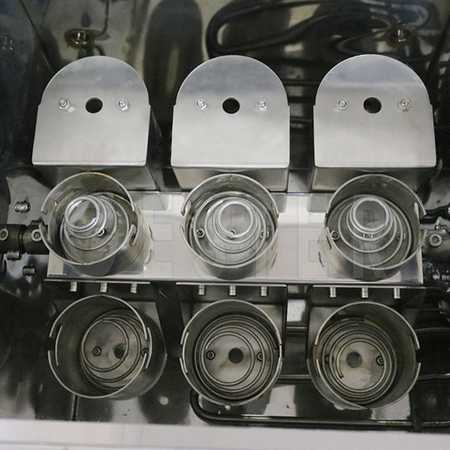- Qinsun Instruments Co., Ltd.
- Tell:+86-21-6780 0179
- Phone:+86-17740808215
- Address:No. 2578 Minhang District Gu Dai Road, Shanghai
- Contact:Mr. Li
- QQ:846490659
How Does a Washing Fastness Tester Work?

The washing fastness tester is a device that measures the color fastness of textile materials to various types of washing. Color fastness is the ability of a material to retain its original color and appearance after exposure to different agents, such as water, detergent, bleach, sunlight, etc. Color fastness is an important quality parameter for textile products, as it affects their durability, appearance and customer satisfaction.

A washing fastness tester simulates the conditions of domestic or industrial washing processes, such as temperature, agitation, time and detergent type. The tester consists of a stainless steel chamber with a rotating drum that holds the test specimens and the reference materials. The reference materials are fabrics dyed with standard colors that have known fastness properties. The test specimens are fabrics that have been dyed with the color to be tested.
The tester also has a water supply system that controls the temperature and flow rate of the water, and a detergent dispenser that adds the required amount of detergent to the water. The tester can perform different types of washing cycles, such as normal wash, gentle wash, enzyme wash, bleach wash, etc.
The tester operates by placing the test specimens and the reference materials in the drum, filling the chamber with water and detergent, and setting the desired washing cycle. The drum rotates at a specified speed and duration, creating agitation and friction between the fabrics. The water and detergent act as solvents and agents that may cause color loss or transfer from the test specimens to the reference materials or vice versa.
After the washing cycle is completed, the test specimens and the reference materials are removed from the drum and rinsed with water. They are then dried and evaluated for color change and staining. Color change is the difference in color between the original and washed test specimens. Staining is the difference in color between the original and washed reference materials.

The color change and staining are measured using a colorimeter or a spectrophotometer, which are instruments that quantify the color values of an object based on its reflectance or transmittance of light. The color values are expressed in terms of color coordinates or color differences according to various color systems, such as CIE Lab, CIE LCH, etc.
The color change and staining values are then compared with the standard values for each type of washing cycle and rated according to a scale from 1 to 5, where 1 means poor fastness and 5 means excellent fastness. The rating is based on the ISO 105 standard or other relevant standards for different types of textile materials and washing methods.
A washing fastness tester is a useful tool for textile manufacturers, dyers, retailers and consumers to evaluate the quality and performance of textile products in terms of color fastness to washing.





